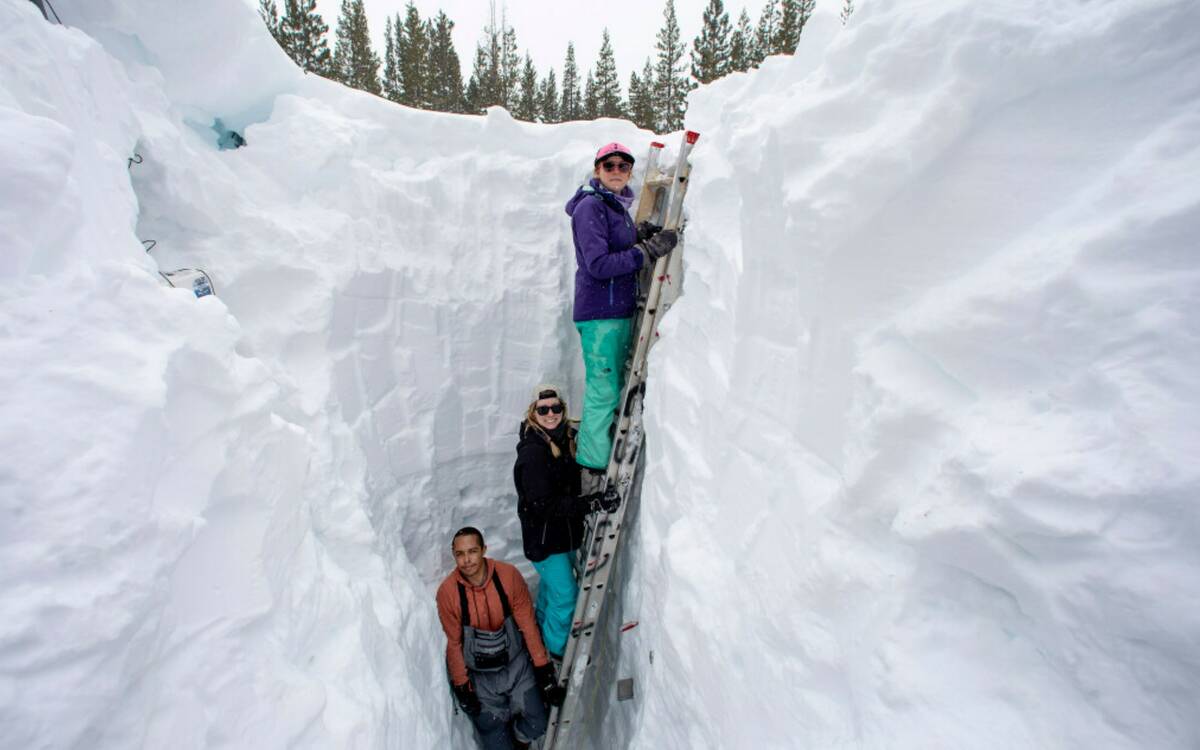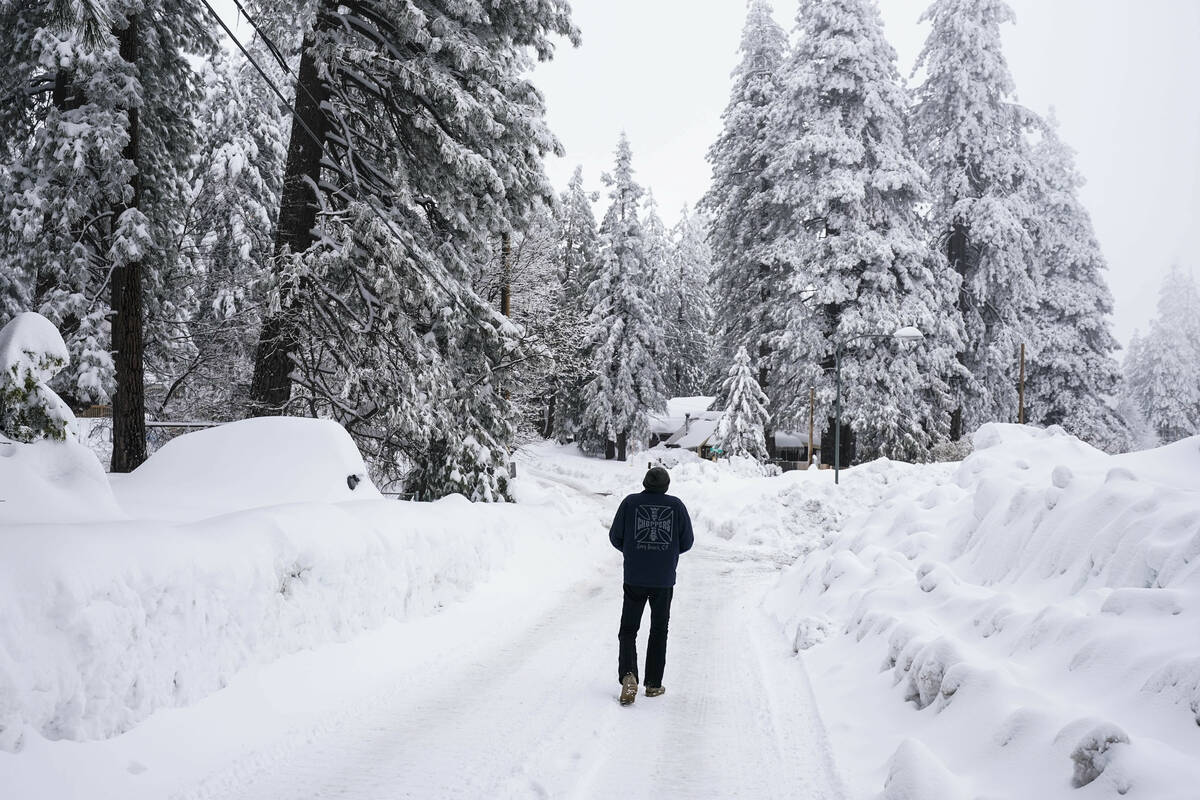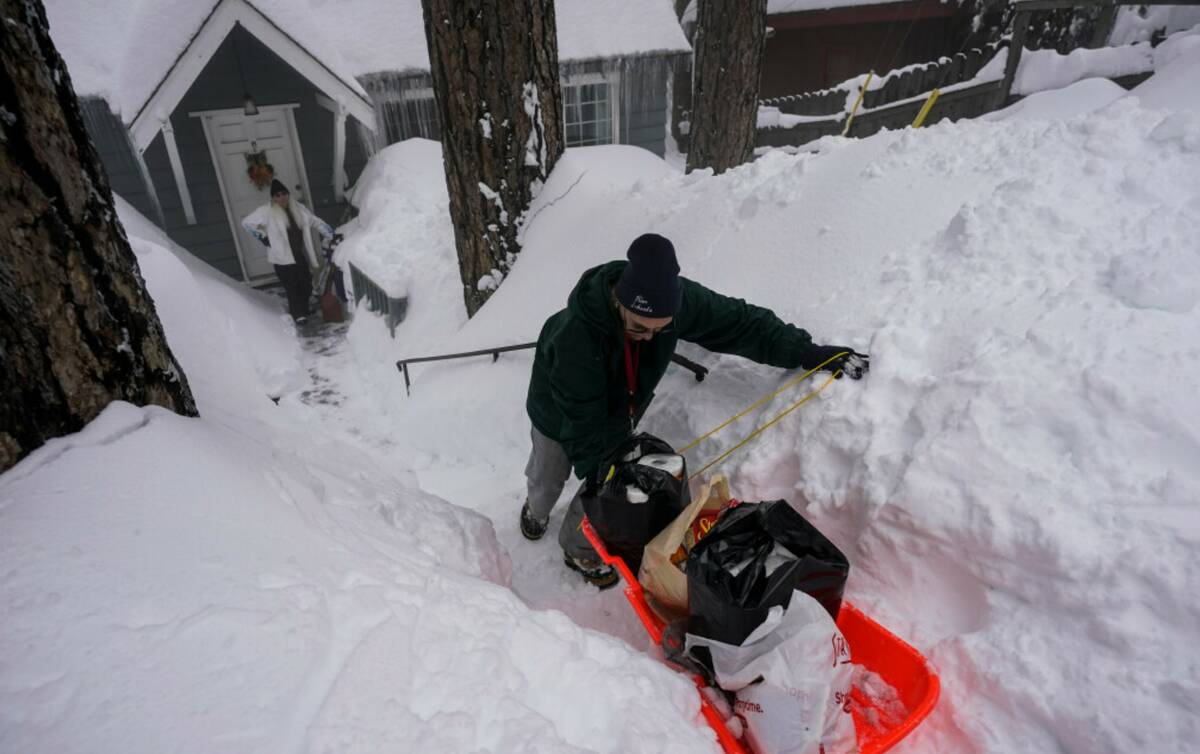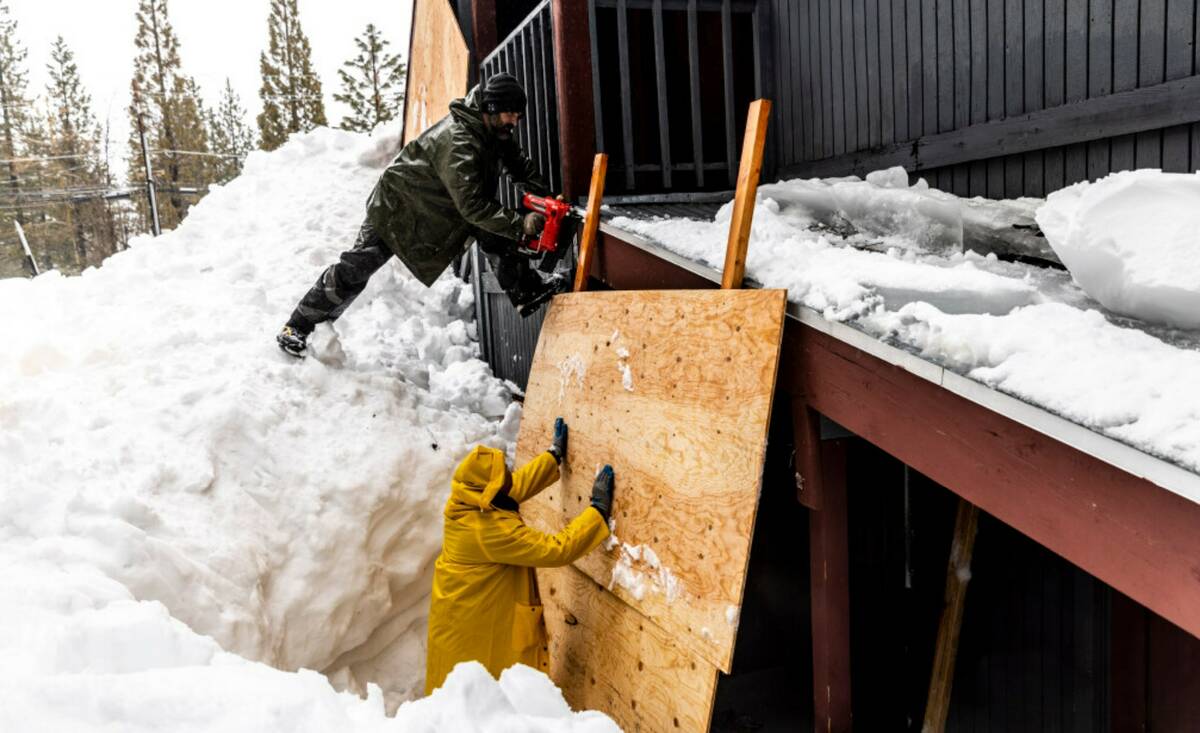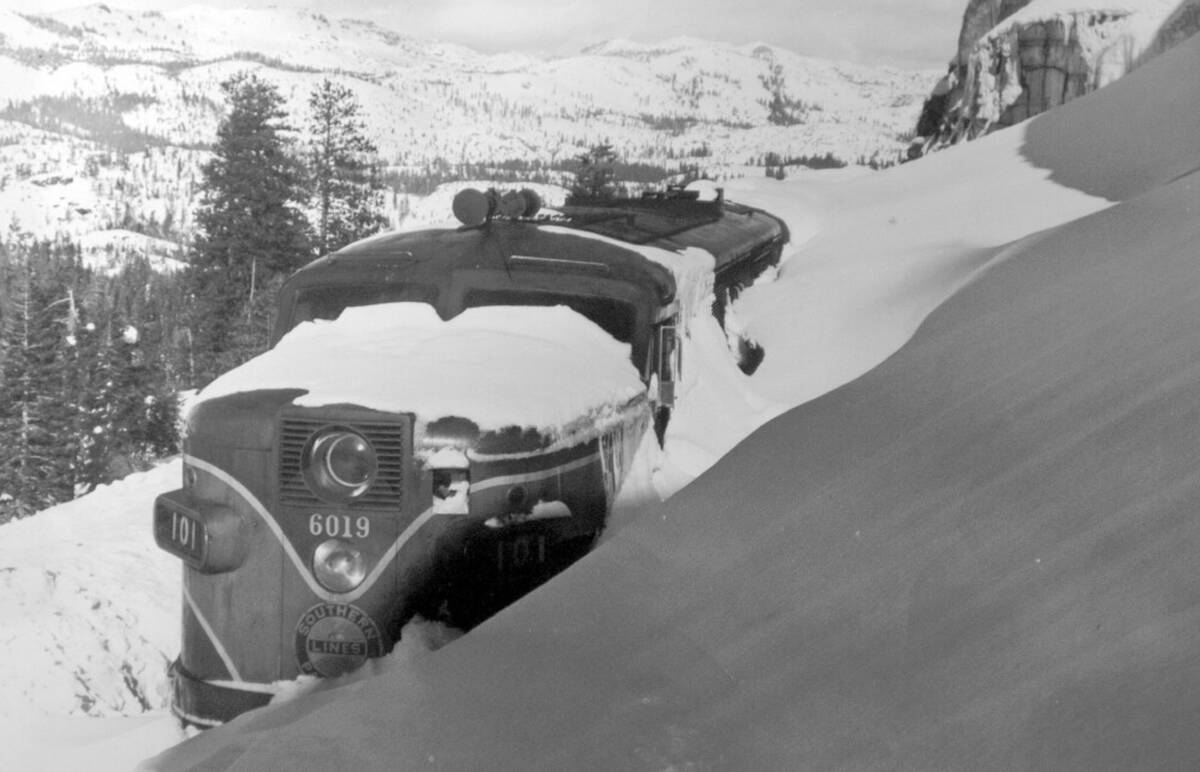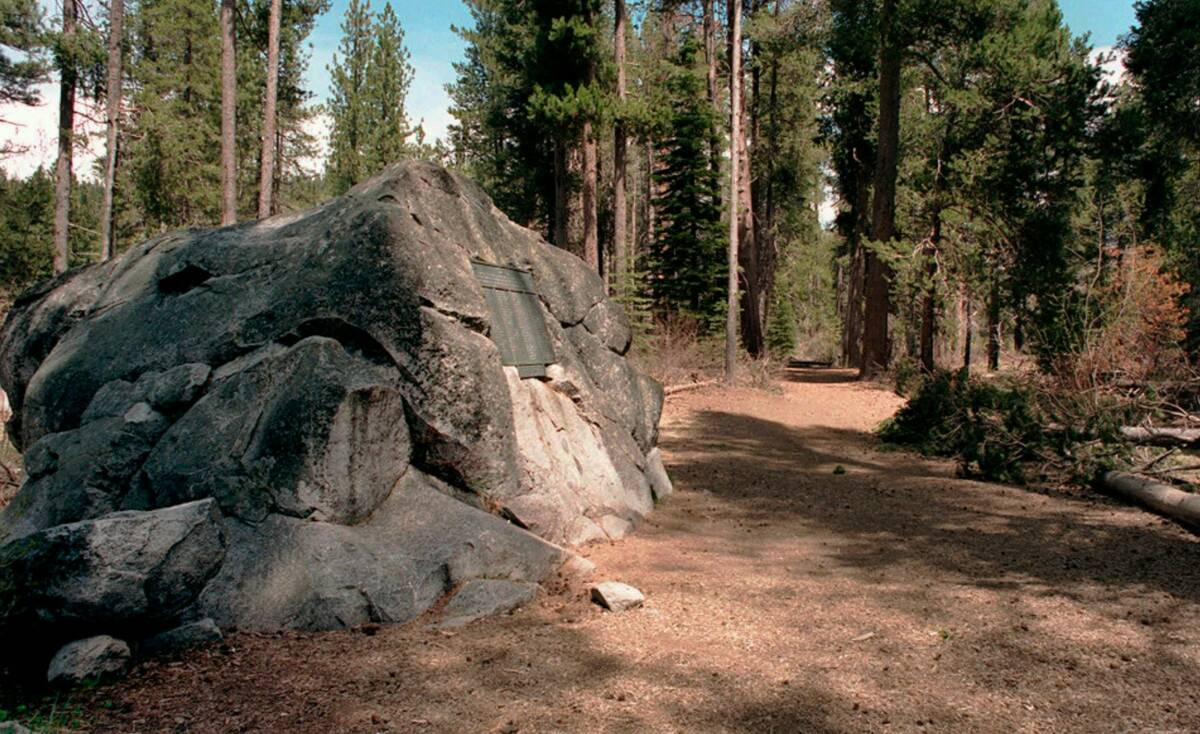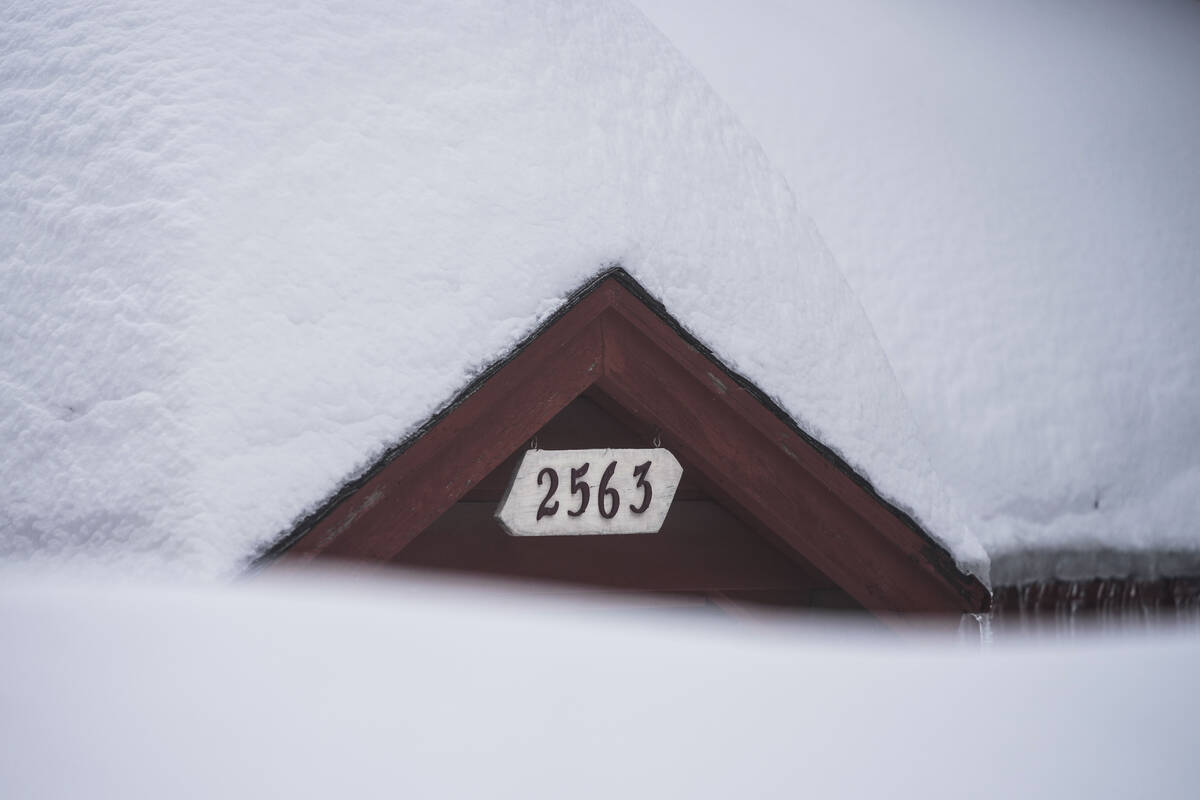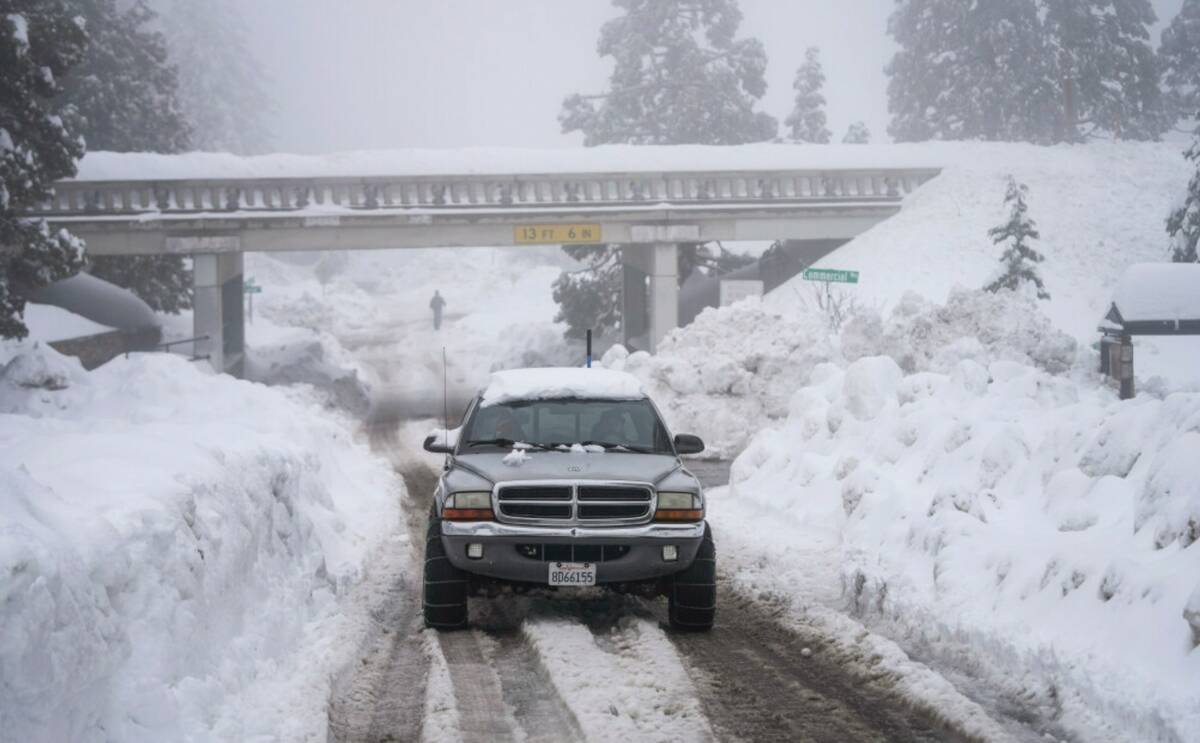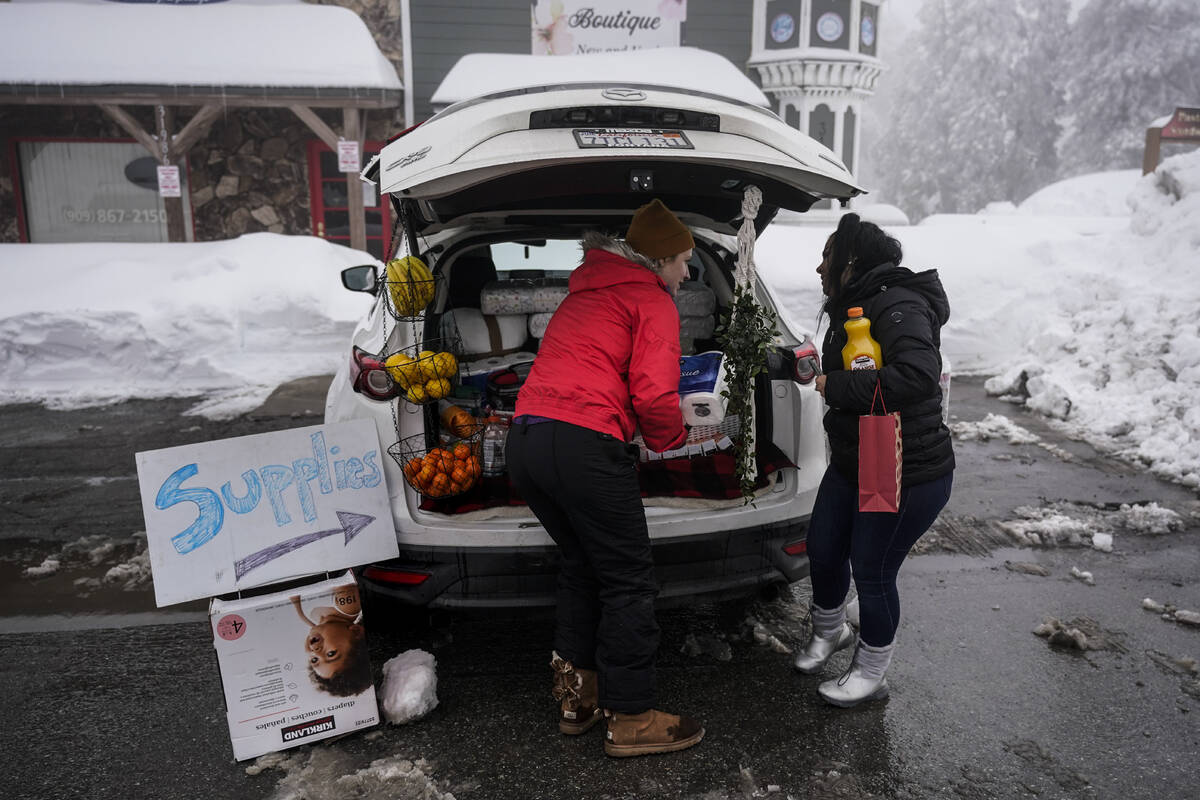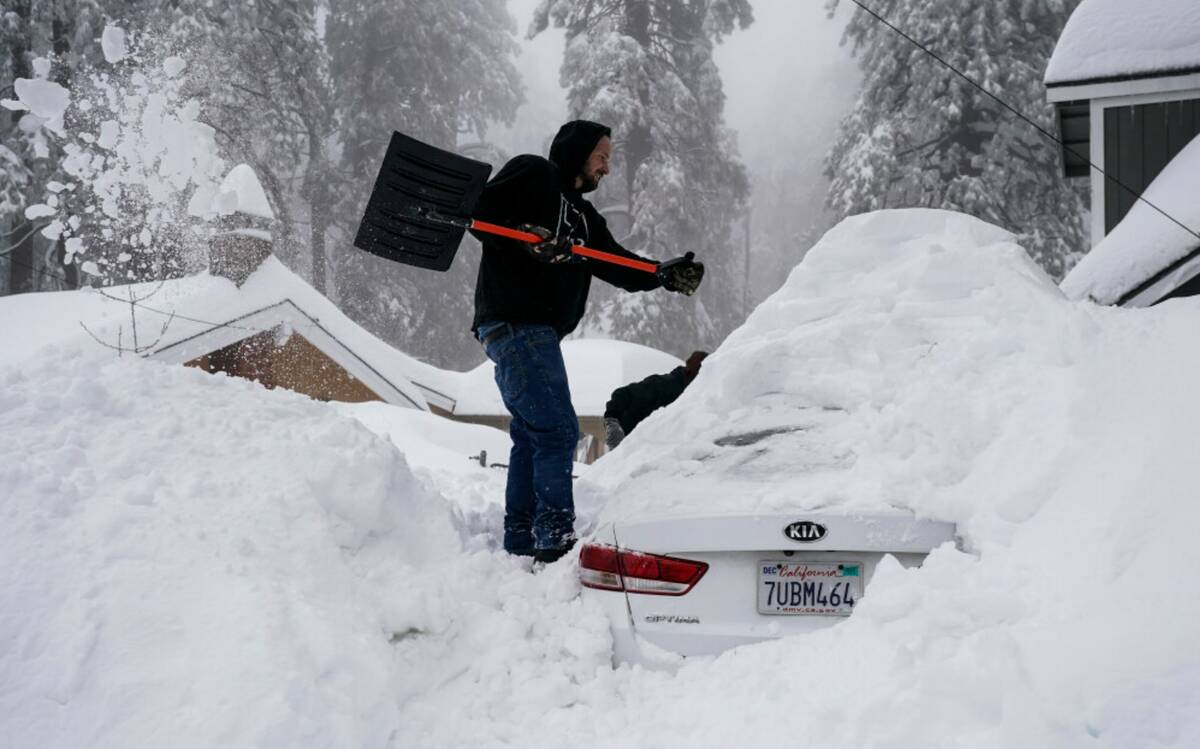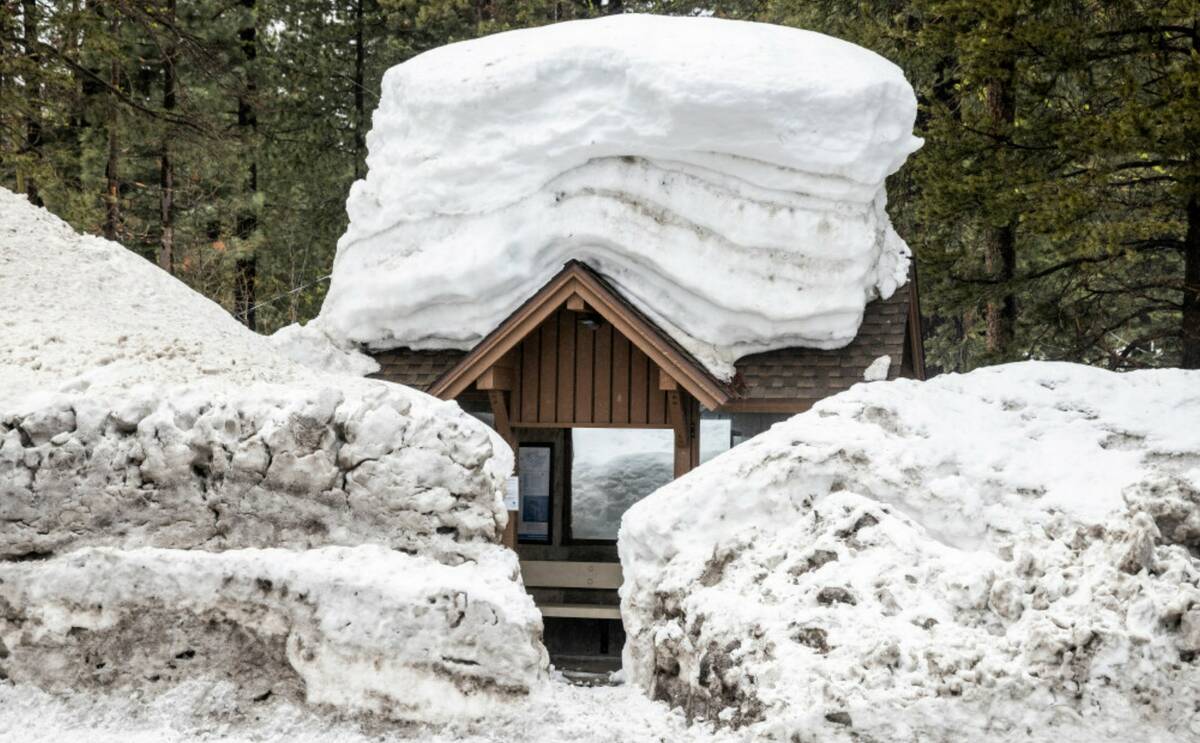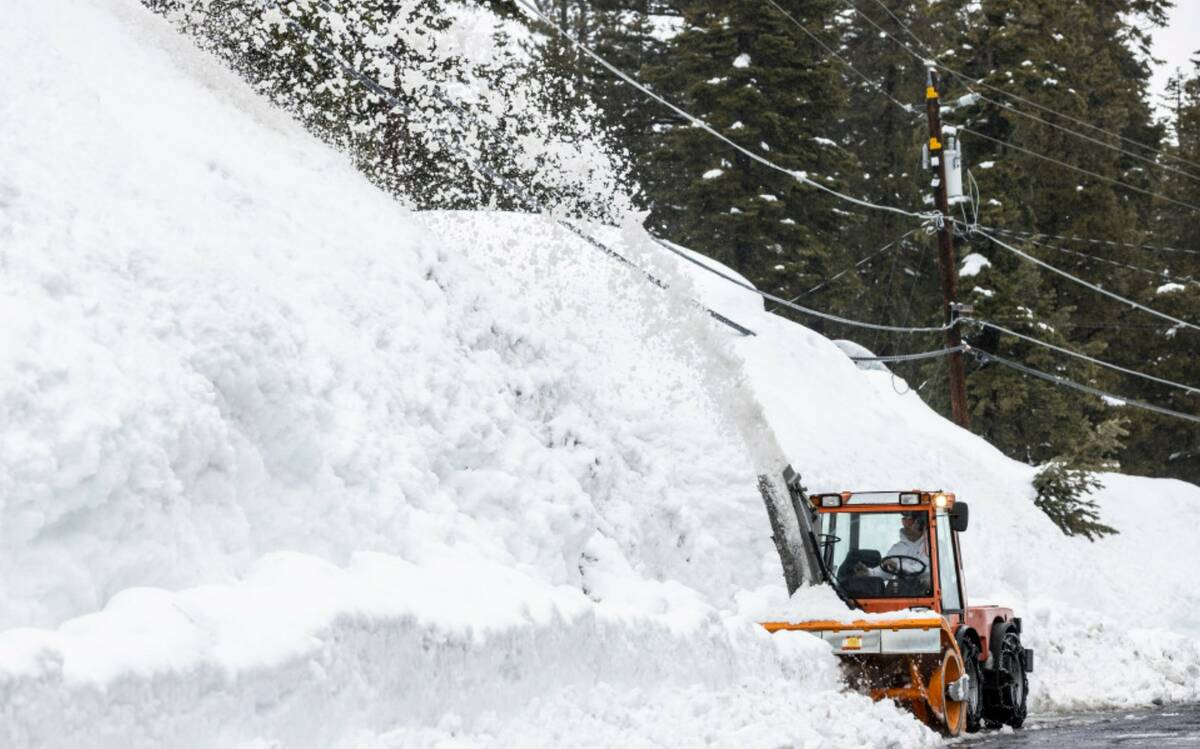Take a look at Sierra Nevada’s 2nd-snowiest season ever — PHOTOS
RENO — No one really knows how much snow fell on the infamous Donner Party when the pioneers were trapped atop the Sierra Nevada for months and dozens died near Lake Tahoe in the winter of 1846-47.
But this season has now etched its way into the history books as the second snowiest in the 77 years of record-keeping at the Central Sierra Snow Lab — more than 56.4 feet with no end in sight.
And there’s still a chance it could surpass the record of 67.7 feet set in 1951-52 when more than 200 passengers on a San Francisco-bound luxury train from Chicago were stranded for three days near Donner Pass west of Truckee, California.
Over the weekend, the “winter that just doesn’t want to end” as the National Weather Service in Reno put it, topped the previous No. 2 record of 55.9 feet set in 1982-83. That was the second of back-to-back blizzard buster seasons remembered most for an avalanche that killed seven at a Tahoe ski resort on March 31, 1982.
Since December, a parade of atmospheric storms have dumped so much snow on the Sierra that Tahoe ski resorts have been forced to shut down multiple times.
The final day of the Nevada high school state skiing championships was canceled. Roofs collapsed under the weight of snow and schools shuttered for days. Interstate 80 closed several times between Reno and Sacramento.
“It started early and it seems to just keep going,” said Eric Sage, 45, of Sparks, who shoveled his way through many big winters growing up in Truckee but doesn’t remember one like this. “Stacked up, big storm after big storm after big storm — wham, wham, wham.”
Keeping records
The official record book keeper is UC-Berkeley’s Central Sierra Snow Lab, founded in 1946 in Soda Springs, California, northwest of Lake Tahoe.
“We’ve seen bigger storms in other years and years with higher snow water equivalent totals … but the relentlessness of this season is likely what makes it most unique,” said Andrew Schwartz, the lab’s manager and lead scientist.
More snow is forecast over the next 10 days, but nobody knows what the spring will bring.
“Historically, some of our big seasons have continued to be active right on through the end of spring,” said Tim Bardsley, the senior hydrologist for the National Weather Service in Reno.
The official winter season coincides with the water year, beginning Oct. 1 and ending the following Sept. 30. Sometimes snow continues falling in the Sierra well into June.
For this winter to overtake the record in 1951-52, another 145 inches would have to fall — unlikely, but not out of the question.
“There’s basically nothing that would indicate just because we’ve been this active, we would then transition the other direction,” Bardsley said. “I’d almost say the opposite is more likely to be true.”
Spring snow
Several of the snowiest winters logged at least one-fourth of their season total after March 15. What’s now the fourth-snowiest winter in 2010-11 received 225 inches of its 643 total inches — or 35% — post-March 15.
The snow lab has records dating to 1880 based on measurements taken by the Southern Pacific Railroad. Those unofficial measurements taken near where the train was stranded in 1952 suggest more snow could have fallen in 1938, and nearly that much in 1880 and 1890.
The lab doesn’t formally recognize those numbers because they were from slightly different locations using a different methodology.
Mark McLaughlin, a Tahoe-area author of several books on Sierra history and weather, accepts the railroad numbers and believes snow that fell on the Donner Party in 1846-47 is similar to what fell in 1951-52.
Ten major storms dumped rain and snow on the mountains the first two weeks of November 1846. The monument at Donner Memorial State Park indicates the snow depth reached 22.5 feet before some of the stranded resorted to cannibalism.
The now-third-ranked 1982-83 winter came on the heels of the season when Tahoe’s deadliest avalanche struck at Alpine Valley south of Truckee. Some 90 inches of snow fell in four days leading up to the disaster.
The 1960 Winter Olympics, the first televised, put Lake Tahoe on the map after the world got a look at the snow-covered mountains surrounding the alpine lake with the turquoise waters. But the winter itself got off to a slow start and Olympic officials were in a panic in the weeks leading up to the games.
“There was no real snow by New Year’s Day and the Olympics were coming in the third week of February,” McLaughlin said. “Then the storm door opened and it snowed and snowed and snowed. There was so much snow no one could practice ski runs on the mountain.”
Author Peggy Townsend and her husband, parents of pro skier Cody Townsend, said they were overwhelmed by the piles of snow when they arrived at their Olympic Valley-area cabin near the base of a Tahoe ski resort last month. They had to park down the road and dig their way in through 10 feet (3 meters) of snow.
“We would have to dig out like three, or four times a day, just so we could get to the woodpile,” Peggy Townsend said. After four days, they’d had enough.
“When there was a break in the snow,” she recalled, “We just said ‘we’re going to get the hell out of there.’”
TOP TEN HISTORIC SIERRA SNOW SEASONS
1951-52 — 812 inches (67.7 feet)
2022-23 — 677 inches (56.4 feet)
1982-83 — 651 inches (56 feet)
2010-11 — 643 inches (53.6 feet)
1981-82 — 624 inches (52 feet)
1968-69 — 602 inches 50.2 feet)
1994-95 — 598 inches (49.8 feet)
1955-56 — 594 inches (49.5 feet)
1957-58 — 593 inches (49.4 feet)
2016-17 — 573 inches (47.7 feet)



